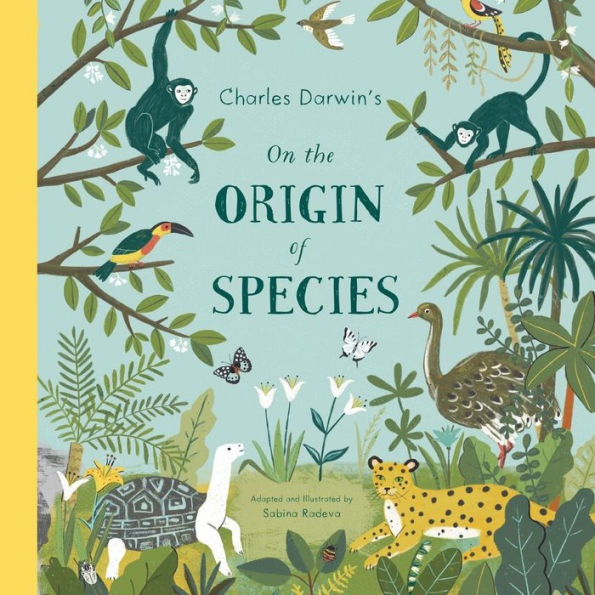Publishers Weekly
06/17/2019
Radeva introduces the story of evolution through accessible, picture-filled spreads. “Since life on Earth began, tiny organisms, plants and animals have been changing slowly, over millions of years.” The text briefly presents a smartly suited Charles Darwin, his journeys aboard the HMS Beagle, and the observations that resulted in the publication of his magnum opus. Animals shown in chalky, stylized art (Radeva takes a primarily nonnaturalistic approach) are used to illustrate complex concepts such as species, variations, competition, and natural selection. One spread depicts gray wolves in an ornately rendered nighttime forest opposite several domesticated dog breeds. Quotes from Darwin are also integrated throughout. While the book may not help readers fully grasp the incremental nature of evolutionary change, it is a welcome primer on the topic. Ages 4–8. (Oct.)
From the Publisher
"A beautiful introduction to a complex topic.” —Booklist, starred
School Library Journal
11/08/2019
PreS-Gr 3—Charles Darwin published On the Origin of Species in 1859. This copiously illustrated adaptation uses accessible language to explain selected concepts from Darwin's work. Radeva successfully emphasizes Darwin's curiosity and observations of nature, changing the order of Darwin's original volume to add clarity. Examples of topics covered from the original work include natural selection, species struggle for existence, nature's effects on variations in species, and the influence of domestication on species. Direct quotes from Darwin's book are set apart from the main text with a different font. Minimal details document Darwin's personal life and his nearly five-year voyage on the HMS Beagle. Those gaps are covered in Peter Sís's The Tree of Life and Rosalyn Schanzer's What Darwin Saw: The Journey That Changed the World, both of which are listed as recommended reading. Another useful appendix identifies corrections to particular Darwinian ideas that have become outdated. The stylish artwork in muted greens, yellows, and browns with accents of red, orange, and black are filled with a range of vegetation and animals. The amount of page space devoted to the artwork varies, and the size/scale of the images change. VERDICT This informational picture book may fill the needs of upper primary teachers seeking supplementary materials to introduce Darwin's theories. Could also appeal to children with an interest in nature and librarians looking for fresh, simpler titles pertaining to Darwin's ideas.—Lynn Vanca, Freelance Librarian, Akron, OH
Kirkus Reviews
2019-06-23
An introduction for younger readers to the major ideas in a seminal work of science.
Radeva, a graphic designer with a background in molecular biology, uses a combination of simply phrased statements and short quotes to boil down Darwin's main notions about variety among both wild and domesticated animals, the struggle for existence that drives the process of natural selection, the development of instinct and of complex organs over long spans of time, and the anatomical resemblances in seemingly disparate species that point to common ancestries. Studiously avoiding mention of religion ("For most of human history, many people believed that everything on the world was created all at once"), she sketches out the genesis of Darwin's thesis with nods to Buffon and Lamarck, brings his theories up to the present with discussions of epigenetics and other recent evolutionary insights, then closes with rebuttals to select "Misconceptions" about Darwinism's precepts. Opening and closing with dozens of labeled butterflies and other insects on the endpapers, the illustrations feature gatherings of naïve-style flora and (mostly) fauna, drawn in minimal but precise detail and lit with bright, clear colors. Human figures—beginning with Adam and Eve in leafy garb and ending, except for a few vignettes, with an evolutionary line leading up to the white-bearded scientist himself—default to white.
Cogent review of some landmark ideas, now seemingly obvious but once revolutionary. (author's note, bibliography, glossary) (Informational picture book. 8-11)



